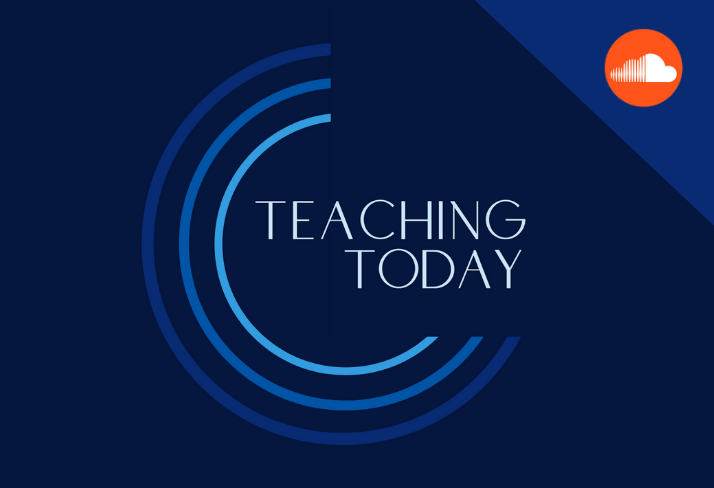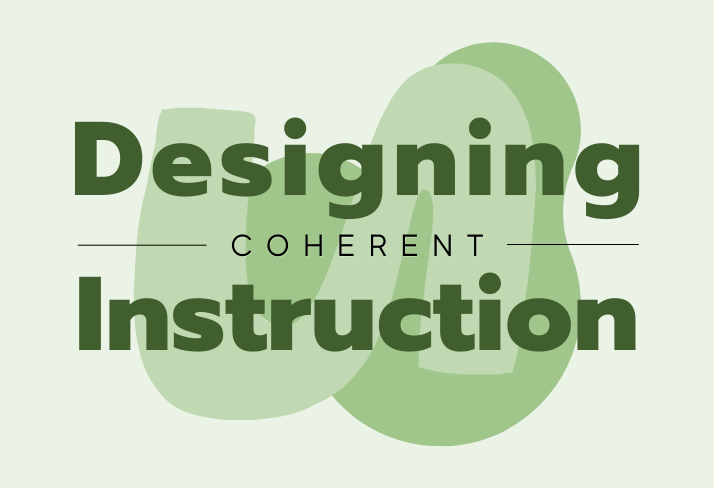|
Create a classroom environment that is a safe, supportive space for your students.
Planning for the school year as a new teacher can be overwhelming under the best of circumstances.
Though it may feel intimidating, it is possible to plan for success as we continue to navigate new experiences, and we can help you plan for an effective and meaningful first year of teaching.
Arranging the physical space
In the fall, many first-year teachers are stepping into classrooms for the first time. Breakout rooms and chat boxes have radically changed how we conceptualize discussion, collaboration, and class participation. What do these look like in our physical classroom? In our physical classrooms, the arrangement of the space can significantly shape our culture of classroom discussion. We have a ton of options when it comes to arranging the space — rows, small groups, pairs, horseshoes, etc. — and each arrangement comes with pros and cons. Rows may seem too regimented and teacher-centered, but groups may become chatty and difficult to manage. While I love a good horseshoe configuration, I’ve been in classrooms where the physical size of the space makes them a challenge, if not an impossibility. In all cases, it’s important to have a plan, but be flexible. Remember to let the space work with you and your lesson, not against it. In my own classroom, my students learned to expect new seating arrangements depending on different instructional goals. When we were focused on Socratic discussion, they might walk in to find the desks in a horseshoe. When they collaborated on inquiry projects, they could be found in small groups. They might be partnered for writing workshops, or they might be in rows for standardized testing. (Over the years, I became very quick at rearranging desks between classes and my students came to expect the unexpected.) When it comes to arranging the physical space, find a plan that works for you and your students!
Building classroom culture
Even after years of teaching, I’m always nervous to meet my students for the first time. The first several days sometimes feels like a revolving door of new faces, and as an introvert, it can be exhausting. I want to make sure I remember my students’ names, interests, and quirks — a daunting task when rosters contain hundreds of students. Yet, forming these personal connections lays the foundation for building a strong community of scholars. As Courtney Brown, Director of the New Teacher Network, shared in her article on classroom culture, “creating a positive classroom climate is key to a productive school year.” Taking steps to establish a positive classroom culture ensures that you’re building your school year on solid ground. Check out some of the activities below, which can help spark ideas for how you might approach getting to know your students: Student Surveys Invite students to share information about themselves via surveys using Google Forms and/or other software. Surveys can be a great way of collecting a variety of data, including gauging your students’ prior experience and level of comfort within your content area. Letter Writing Write a letter introducing yourself to your students. Then, invite students to write their own introductory letters in response, giving them the opportunity to share what’s important to them, what they’d like you to know, and what a successful school year might look like in their eyes. Interviews Students get to know each other by producing Humans of New York-inspired narratives. After sharing age-appropriate models from the Humans of New York database, you can invite students to interview each other and create a digital Humans of Our Classroom showcase using Google Slides. This will encourage students to move beyond facts about their classmates and find interesting stories to write up and share with the whole group. Memoir & Poetry Writing Invite students to explore their identities with creative writing. Consider 6-Word Memoirs and Themed Poetry Collections as ways to introduce mentor texts and writing protocols while simultaneously getting to know your students. Goal Setting Encourage a growth mindset by inviting students to set SMART goals for the upcoming school year. For an artistic take on goal setting, you might invite students to create vision boards to help them visualize the end in mind.
Engage authentically
While we hope one or more of these culture-building activities has sparked your interest, it’s also important to remember to engage authentically with your students. Make sure that your classroom culture reflects your personality as a teacher. What works well for your team leader down the hall might not necessarily work for you, and that’s okay! As G. Faith Little writes:
Ultimately, though each of our classrooms might look a little bit different from the outside looking in, positive classroom environments tend to share certain qualities. When I close my eyes and imagine this classroom environment, I see a space that is warm and welcoming, a space where my students feel safe expressing their authentic selves. I also see a space where high expectations are maintained for all students through differentiation. The ideal classroom is warm, yet appropriately challenging, and it’s important to set these expectations up front, particularly after a year of virtual learning, when many students may have felt particularly isolated and disengaged from school.
Establishing classroom structures
It’s important to establish and maintain consistent classroom structures and routines that work across in-person spaces and virtual platforms — here are a few things you might want to consider as you plan for the school year: Plan for Student Behavior Have a plan to proactively respond to student behavior, and use our Understanding Off-Task Behaviors resource as a guide. There are four types of behavior that have a negative impact on the classroom environment — it’s important to be able to recognize what each type of behavior looks like, as well the motivations behind it, so we can act proactively as opposed to simply reacting. Plan for Material Management Make sure you have a plan for managing the materials in your classroom. How will students turn in their work? Will student work be entirely digitized via Google Classroom or another online learning platform? If students are receiving printed materials, how will these be stored and submitted? Having a plan for how materials move through your classroom will save you a headache when it comes to the end of the marking period. Plan for Curriculum Some of our classroom structures are linked to our curriculum and planning. Check out a sample curriculum planning template — according to Courtney Brown, “these templates help new teachers thoughtfully organize and plan their curriculum while examining classroom rituals and routines, assessment strategies, and more!”
Though this is just the beginning of everything you may want to consider as you plan for the new school year, try not to overwhelm yourself by overplanning or becoming too cemented into a particular routine. My mentor always liked to remind me to be prepared to modify and adjust, a lesson that I’ve taken to heart in the years since. This year, like the last, will likely demand a great deal of flexibility and ingenuity, so be prepared to modify and adjust, but most importantly, be prepared to give yourself grace!
If you’re interested in learning more about planning with successful instruction in mind, check out our upcoming online course, Designing Coherent Instruction. This professional opportunity is intended to support new teachers in strengthening their instructional core, increasing strategic planning skills, and ensuring that lesson objectives align with instructional methods and assessments. Within each module, we’ll delve into the key competencies of the Danielson Framework, examine the key look fors, and offer promising practices and practical strategies that can be implemented. |
|
The Center for Professional Education of Teachers (CPET) at Teachers College, Columbia University is committed to making excellent and equitable education accessible worldwide. CPET unites theory and practice to promote transformational change. We design innovative projects, cultivate sustainable partnerships, and conduct research through direct and online services to youth and educators. Grounded in adult learning theories, our six core principles structure our customized approach and expand the capacities of educators around the world.
|
ABOUT US
525 West 120th Street, Box 182 New York, NY 10027 416 Zankel Ph: (212) 678-3161 [email protected] Our Team Career Opportunities |
RESOURCES
Professional Articles Ready-to-Use Resources Teaching Today Podcast Upcoming PD Opportunities |
COACHING SERVICES
Custom Coaching Global Learning Alliance Literacy Unbound New Teacher Network Student Press Initiative |


























